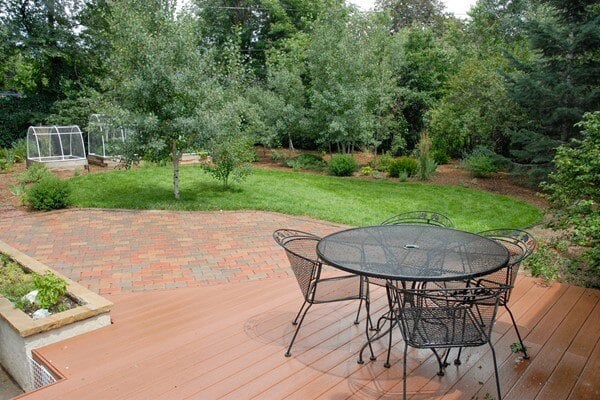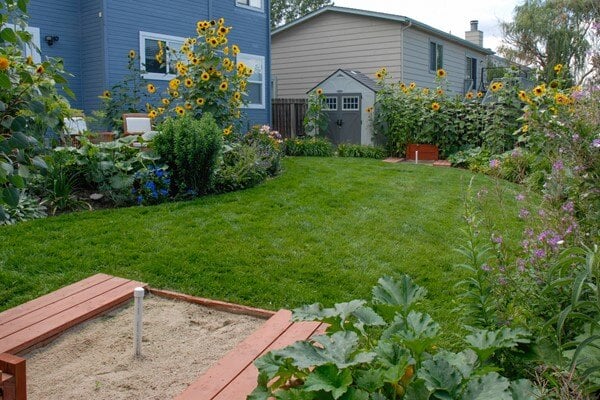Bearded Iris
Bearded irises are a group of drought-tolerant perennial flowers with many different cultivars. They grow as upright plants with bluish-green, sword-shaped leaves.
In late spring, the showy, large flowers bloom on sturdy stalks above leaves. They get their name from the "beards" that resemble fuzzy caterpillars on the downward-facing petals.
Bearded iris have a wide range of colors from black, blue, purple, orange, white, yellow, and cream. They come in a variety of heights, with the shorter cultivars blooming earlier than the taller cultivars.
Bearded irises are very drought-tolerant and easy to grow in the Colorado Springs area.
.jpg)
.jpg)
.jpg)
.jpg)
.jpg)
.jpg)
.jpg)
.jpg)
Bearded Iris
Bearded irises are a group of drought-tolerant perennial flowers with many different cultivars. They grow as upright plants with bluish-green, sword-shaped leaves.
In late spring, the showy, large flowers bloom on sturdy stalks above leaves. They get their name from the "beards" that resemble fuzzy caterpillars on the downward-facing petals.
Bearded iris have a wide range of colors from black, blue, purple, orange, white, yellow, and cream. They come in a variety of heights, with the shorter cultivars blooming earlier than the taller cultivars.
Bearded irises are very drought-tolerant and easy to grow in the Colorado Springs area.
Plant details
Botanic Name
Iris spp.
Pronunciation
EYE-ris
Mature Height
2 to 4 ft.
Mature Spread
2 to 4 ft.
Water usage
One Droplet: Water twice per month or less, once established.
Two Droplets: Water about once per week, once established.
Three Droplets: Water about twice per week, once established.
Flower Color
various colors
Bloom time
early summer
Colorado Native
No
Natural Habitat
central and southern Europe
Light Requirements
sun
Cold Hardiness
USDA zones 3-9
Elevation Limit
hardy to 9,000 ft.
Performance
At the Water Wise Demonstration Garden, there are many different bearded iris cultivars, ranging in color from white to very dark purple.
The flowers are very beautiful when in bloom. The leaves are also quite attractive, with their upright, blade-like shape. Bearded iris have proven to be quite drought-tolerant and long-lived.
The Elmohr Iris Society of Colorado Springs maintains a wonderful demonstration garden in front of the East Library in Colorado Springs. It is a fantastic resource to view individual cultivars.
Maintenance
Cut flower stalks at the base after flowering is done. Remove the old, brown leaves in fall or spring.
Iris need to be dug up and divided every five years or so. August is a good time to divide them.
See in a landscape
This downtown backyard was previously fence-to-fence Kentucky bluegrass and required too much water and maintenance. The yard was renovated to add a patio for outdoor living space, a small area of turfgrass for the family dog and a large mulched planting area that accommodates the raised vegetable beds. Drip irrigation waters the plants in the mulched areas on one zone and a separate drip zone waters the raised beds since vegetables need to be watered more frequently than shrubs and perennials. This renovation saved water and time by minimizing the turfgrass and keeping the plan simple.
This backyard needs to be durable enough for this family of adults, kids and dogs. Kentucky bluegrass can be a great option for high traffic yards, just make sure to keep the area under 1000 square feet, and till and amend the soil before planting seed or sod. This yard also features shrubs, perennials and vegetables around the grass and is watered with efficient spray heads and nozzles in the grass area and drip irrigation in the planted areas.


.jpeg)
.jpeg)
.jpeg)
.jpeg)
.jpeg)
.jpeg)
.jpeg)
.jpeg)
.jpeg)
.jpeg)